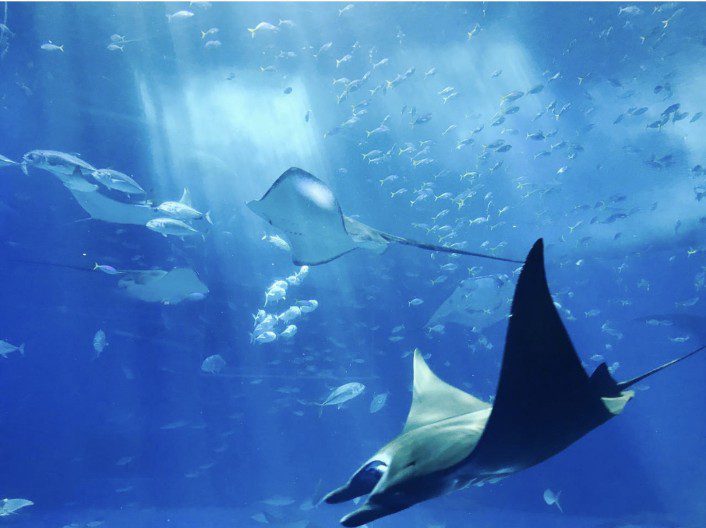Professionals and fans alike are now capturing the aquatic environment with underwater cameras thanks to significant improvements in recent years. The exploration and documentation of underwater settings have become simpler because of advancements in camera technology and creative lighting design. The future of this intriguing subject of photography is being shaped by these six amazing breakthroughs in underwater photography.
1. High-Resolution Underwater Cameras
Subsea imagery is undoubtedly different now that high-resolution underwater cameras are available. These cutting-edge cameras can take remarkably clear photos even in difficult underwater situations thanks to their cutting-edge technology. These cameras are excellent at capturing detailed, colorful photos that highlight the delicate beauty of marine life and underwater scenery, whether you’re diving in murky waters or exploring deep-sea regions. These excellent outcomes are made possible by improved sensors and image processors, which make sure that every detail is recorded with accuracy and clarity. These cameras are still vital resources for researchers, underwater photographers, and marine biologists because they allow for more thorough investigation and recording of the undersea environment as subsea imaging technology advances.
2. Advanced Lighting Solutions
In underwater photography, where natural light is frequently scarce, lighting is essential. Image quality has greatly improved with the advent of sophisticated illumination options like continuous LED lights and strong underwater strobes. These lighting instruments aid in illuminating objects, minimizing shadows, and highlighting the undersea world’s inherent hues. It is now possible for photographers to produce balanced, well-lit shots in any depth or visibility situation. Innovative underwater lighting technologies, such as strong strobes and LED lights, have completely changed the way photographers take pictures. With the use of these technologies, photographers may more effectively regulate the illumination underwater, improving visibility and highlighting the vivid colors of the landscapes and marine life. Photographers can produce professional-caliber images with these tools, catching minute details and preserving clarity in difficult underwater situations.
3. Compact and Versatile Housing Units
Underwater photography is now more widely available and varied thanks to creative housing solutions. These devices provide complete control over camera operations and are made to shield cameras from water damage. With the availability of small and light housings for many camera types, photographers may now get deep shots without carrying bulky gear. Ergonomic designs and customizable controls improve the user experience as a whole. In addition to offering strong water resistance, these contemporary housing units provide user-friendly controls that replicate the functionality of the camera’s surface. With them, photographers can fine-tune settings and get exact photos underwater without sacrificing performance or utility. Because of this, underwater photography is now more widely available to both pros and hobbyists, encouraging innovation and discovery in aquatic settings.
4. Wide-angle and Macro Lenses
Underwater photographers now have more creative options thanks to specialized lenses. Macro lenses are excellent for taking pictures of the smallest, most minute aspects of marine life. In contrast, wide-angle lenses are best for shooting vast underwater vistas and big marine species. With the help of these lenses, photographers may play around with various angles and compositions, giving their underwater portfolios more depth and variation. Divers may now effortlessly transition between wide-angle and macro lenses because of adaptable lens systems made especially for watery settings. These lenses improve the quality and detail of pictures by enabling superior optical performance and accurate focusing underwater. These tools enable photographers to express their creativity and capture the undersea world’s beauty, whether it’s the majesty of coral reefs or the delicate textures of underwater critters.
5. Remote-controlled and Autonomous Drones
The possibilities for underwater photography have increased with the deployment of autonomous and remote-controlled underwater drones. Drones like this may investigate places and depths that are hazardous or challenging for divers to access. Drones with high-definition cameras take amazing pictures and videos from unusual perspectives. They are very useful for recording underwater surroundings, doing scientific studies, and supporting conservation initiatives. Photographers may now shoot images in isolated or dangerous underwater locations with unparalleled freedom and capabilities thanks to underwater drones. Thanks to technological improvements, these drones may now be operated remotely or on their own, offering real-time imagery and data collecting that improves maritime research and photography. In order to investigate and preserve underwater environments, marine scientists, filmmakers, and conservationists need them because of their capacity to explore depths and get high-quality photos.
6. Image-Enhancing Software and Apps
Underwater photography relies heavily on post-processing, and improvements in image-enhancing tools and software have increased the effectiveness and efficiency of editing. By providing functions like noise reduction, color correction, and sharpening, these tools assist photographers in improving the sharpness and brightness of their shots. Thanks to advancements in software, photographers can now easily generate high-quality outcomes throughout the editing phase. Certain image-editing programs and applications are designed with underwater photography difficulties in mind. They provide solutions for dealing with problems like water haze and dim lighting. These developments enable photographers to enhance the overall visual impact of their work by fine-tuning their underwater shots, bringing out colors and subtleties that could otherwise be lost.
Conclusion
The advances in underwater photography have greatly expanded the skills and creative potential available to photographers. This discipline has evolved thanks to high-resolution cameras, sophisticated lighting schemes, adaptable housing, specialized lenses, underwater drones, and potent editing software. Thanks to these technological advancements, photographers can now more than ever capture and share the wonder and beauty of the undersea environment.

